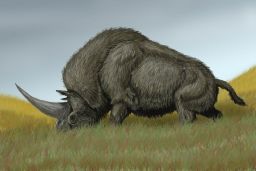Story highlights
Fossilized remains reveal the 'Siberian unicorn' was still on earth 29,000 years ago
Scientists are intrigued as to how it survived so much longer than originally thought
New research has revealed the ‘Siberian unicorn’ roamed the planet far more recently than we originally thought.
The bad news is it looked nothing like the mythical creatures portrayed in so many fairy tales.

It was fatter and furrier, and in reality more rhino than stallion. It did, however, have a huge horn.
This real unicorn, or ‘Elasmotherium sibiricu’, was originally thought to have gone extinct 350,000 years ago.
Brains before brawn: How the T. rex became king
But a well-preserved fossilized skull found in Kazakhstan reveals the shaggy creature was still alive and walking this earth a mere 29,000 years ago, according to a study published this month in the American Journal of Applied Sciences.
There is now some mystery surrounding how it survived so long.
“Most likely, the south of Western Siberia was a [refuge], where this rhino had preserved the longest in comparison with the rest of the range,” said Tomsk State University scientist Andrei Shpansky, who published the findings.
The team are hoping the find will help them understand what environmental factors played a part in the eventual extinction of the species, and what role migration played in its survival up until that point.
Something they think might come in useful considering our current climate change situation.
Climate change and the importance of 2 degrees
“Understanding of the past allows us to make more accurate predictions about natural processes in the near future,” said Shpansky.


